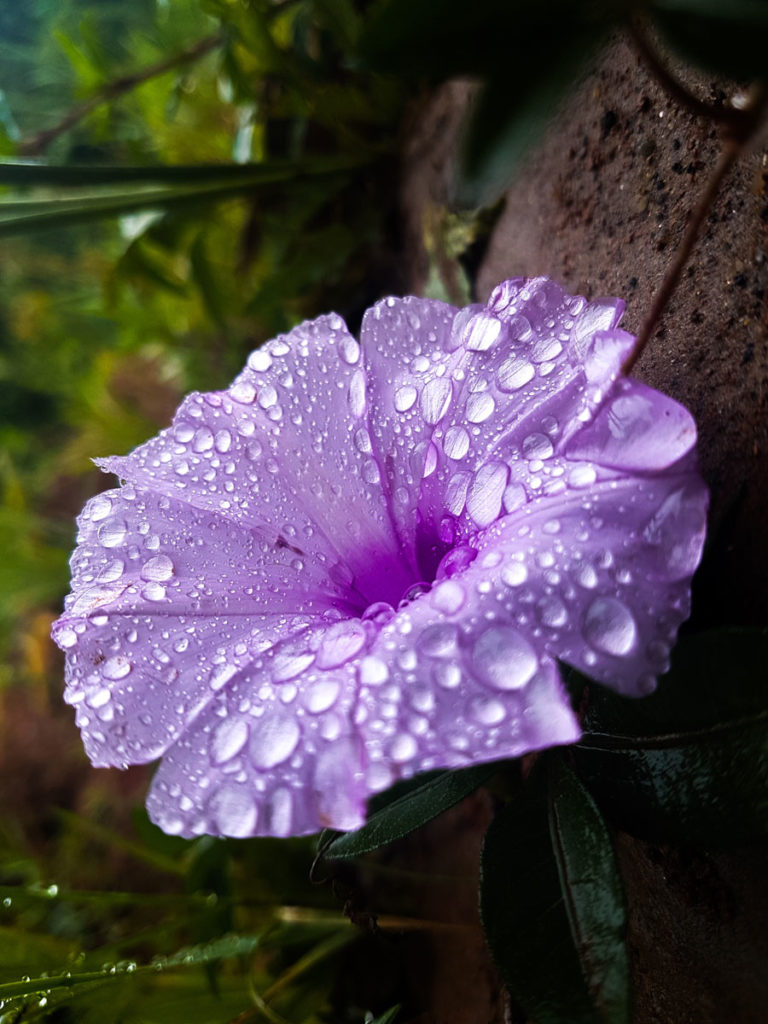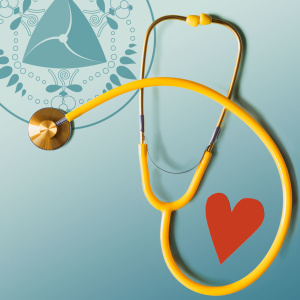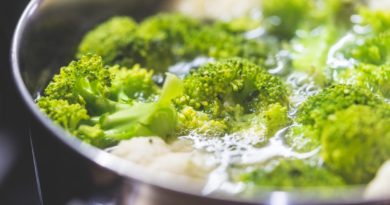Seven Ayurvedic Herbs for Fighting Cancer, Boosting Immunity and Preventing Heart Disease
For thousands of years plants have been used as medicine. It has not been until recently that the scientific community has begun to study and isolate certain compounds in plants and utilize them as medicine. This strategy of isolation and reductionism has proven useful to develop new drugs that treat many diseases. Unfortunately in conjunction with these advances in treatment there has been an explosion of unwanted side effects normally mitigated by the synergistic nature of the whole plant. Ayurveda has long since seen the strength of using whole plants and combining them in artful way to create personalized cures. Just like any effective team or group when herbs are combined together they become more powerful than their individual parts.
What has long been dismissed as folk medicine is now gaining scientific validity as research into oxidation and free radical damage becomes more mainstream. For those of us who have forgotten our college chemistry course, free radicals are basically molecules that have lost an electron which changes their charge. This makes them highly reactive and considerably unstable as they are trying to regain an electron so they can be balanced. Sound like anyone you may know? These greedy molecules are not afraid to steal electrons from neighboring molecules. Depending on their location in the body they may destroy or severely compromise your DNA, enzymes, cell membranes and proteins. Bad news! This has been found to have far reaching effects in the body and can be the cause of many types of disease.
Some of the characteristics of these free radicals are that they are mobile, fast and highly reactive.
Some of the characteristics of these free radicals are that they are mobile, fast and highly reactive. Remind you of any of the Ayurvedic doshas? The body has naturally adapted to the presence of these free radicals and can actually use them to carry out beneficial work. For example the immune system employs them to destroy hard to kill pathogens such as bacteria and viruses. The destructive nature of free radicals can be used to tear down the old so that the new can be created. Have you heard the story of Jivaka, the Budha’s physician? He was asked to go out in the world and find a substance that could not be used as medicine. He came back empty handed and was hired on the spot. So anything can be used as medicine, but unfortunately most of us have too many free radicals causing systemic inflammation and damaging our healthy tissue.
This is because free radicals are naturally produced during the production of energy in the body and as a response to external pollution and stress. I would like to draw a parallel to the Vata dosha. Vata is responsible for organizing all the functions of the body through chemical messengers. One way to think about Vata is as the CEO of a company. Vata holds the vision of the company and mobilizes all the pieces of the corporate machine to do their individual duties. When however the CEO gets overwhelmed by stress or burnt out from excess energy production the entire system begins to falter. The managers, who I would consider to be Pitta in this analogy, start to try and take over but since they don’t see the big picture they usually end up butting heads with one another. So from an Ayurvedic perspective free radical damage is most often a Vata-Pitta condition.
As free radicals are inevitable the body has developed strategies to control and mitigate the free radical damage. This is what herbalists and research scientists alike call antioxidants. Antioxidants encompass a host of different kinds of chemicals including water soluble, lipid soluble and enzymatic molecules. One of my favorite classes of antioxidants are enzymes. I love enzymes because they are able to respond by neutralizing free radicals. Some of the more popular of these enzymatic superheroes are superoxide dismutase (SOD) and glutathione. Each enzyme is usually specific to a certain kind of free radical. For example SOD neutralizes superoxide which is responsible for different types of cancer, burning skin rashes and, and some types of lung disease (Niwa and Tsutsui 1983) (Fantone and Ward 1985) (Niwa and Hanssen 1989). Glutathione is unique in that is responds to many different types of free radicals by aiding the liver’s detoxification of alcohol, drugs and pollutants by making them more water soluble so they can be excreted more easily. (Wu et al 1994) These are the beneficial qualities of the Pitta Dosha which is responsible for maintaining our metabolism through enzymatic function and detoxification. Ayurvedic treatments and herbs that balance Pitta often positively affect these enzymes.
Plants, like humans, have developed a way to synthesize and create their own antioxidants. The plants produce antioxidants in response to being exposed to the suns radiation and to insulate themselves against the oxygen generated as a byproduct of photosynthesis. Plants produce nutrients such as vitamin c, vitamin e, beta-carotene, polyphenols and bioflavonoids. All of these can reduce free radical damage and there are 8000 polyphenols and 5000 bioflavonoids that have been identified to protect the health of humans. Many of these are found in Ayurvedic formulations called Rasayana’s which we will refer to as Ayurvedic Antioxidants (AA). Rasayana’s or AA are usually formulas that are composed of many powerful Ayurvedic herbs such as Ashwagandha, Licorice, Shatavari, Amalaki, Guduchi, Nirgundi and Guggulu.
Using Ayurvedic Antioxidants to Boost Immunity
As mentioned earlier from the Ayurvedic perspective free radicals are the result of Vata and Pitta in excess. In addition to balancing Vata and Pitta through diet and lifestyle herbal formulas can be used to enhance the immune systems function. Herbal formulation is an advanced science that improves bioflavonoid and polyphenol activity through combining multiple herbs. Combining the super 7 herbs of Ashwagandha, Licorice, Shatavari, Amalaki, Guduchi, Nirgundi and Guggulu with other herbs will direct the action of the formula and replicate some of the results found below. A survey of the research on common Ayurvedic antioxidant formulations shows the following immunity enhancing properties:
- Lymphocytes are a class of white blood cells that are mainly found in the lymph fluid who are responsible for identifying and eliminating pathogens. Animals fed AA produced 32-88% more lymphocytes than the control leading to improved responses to disease causing organisms (Dileepan et al 1990).
- Tumor cells are constantly popping up in the body, but are eliminated by a type of white blood cell called a macrophage. The ability of these cells to destroy tumors was improved when AA were fed to mice.
- Many allergy symptoms are caused by an overreaction of the immune system to common substances like pollens or proteins. When patients were given AA they self reported having fewer allergy symptoms (Glaser, Robinson, and Wallace 1988)
These plants are powerful at fighting the degenerative changes caused by antioxidants. Most of this research has been done on Amrit Kailash Nectar paste and Ambrosia Tablets which can be found at MAPI.
Using plants is vital to survival on this planet and more and more ancient wisdom is being validated by science. I hope that you find inspiration to incorporate one or more of these herbs into your routine in order to boost your immunity this season.
Fight Cancer
As mentioned earlier some types of cancer have been tied to free radical damage so herbs that limit this kind of damage can be an excellent adjunct in the treatment and prevention of cancer. Here is a survey of the research on how these different types of cancer respond to common Ayurvedic Antioxidants (AA).
- Breast tumors and carcinomas have been lined to free radical damage. In lab animals who were given AA there was 60% less breast carcinomas and 88% fewer tumors compared to controls (Sharma et al 1990)
- The most malignant type of skin cancer, melanoma, was shown to have inhibited growth when AA were put in contact with human melanoma cells (Prasad, Parry, and Chan 1993)
- The liver is our main organ of detoxification and when lab animals were given a therapeutic dose of AA there was a 27% reduction in liver cancer and 35% fewer tumor nodules (Penza et al 2007)
Other types of cancer are also being researched to see how they may respond to antioxidant therapies and AA. Most of this research was compiled using standardized formulations called Amrit Kailash Nectar paste and Ambrosia Tablets which can be found at MAPI.
Preventing Heart Disease
Hear disease is considered to be the main cause of disease in the US. As many cardiovascular conditions are associated with free radical damage the antioxidant properties of Ayurvedic herbs has been shown to provide benefit for the heart.
- Bad cholesterol can be one marker for an increased risk of heart disease. AA was shown to protect LDL from free radical damage which could be beneficial in the prevention of atherosclerosis or plague in the arteries (Sharma et al 1992).
- I rabbits with hyperlipidemia AA reduces the atheroma (lipid plaque) on the aortic arch by 53%
- Angina patients using AA found that there was a decrease in the mean frequency of their attacks from 9 to 3 (Dogra et al 1994)
Free radical damage has been correlated with age associated disorders. Here are some of the ways it helps the aging body and brain
- Antioxidant enzymes that protect the brain such as SOD, glutathione peroxidase, and glutathione reductase all increased with AA (Vohra, Sharma, Kansal 1999, 2001)
- In a randomized double blind study an AA was found to improve children’s performance of nonverbal IQ scores by 10 points (Nidich et al. 1993)
It needs to be noted that not all AA are created equal and most of these studies were done on a formulation that was developed by Dr B. D. Triguna, Dr V. M. Dwivedi, and Dr Balraj Maharshi. This being said any AA formulation created with vigorous scientific standards based on the ancient formulations of Rasayana can have the same effect. Some of the herbs that are found in the formulation are:

- Ashwagandha,
- Licorice,
- Finger leaf morning glory,
- Asparagus Adscendens,
- Elephant Vine,
- Amalaki,
- Guduchi,
- Shatavari,
- Nirgundi,
- Dwarf morning glory,
- Curculigo,
- Kariria, and
- Guggulu.
To determine which Rasayana formula might work best for you, please consult an experienced Ayurvedic practitioner.
Book a Session
-
 Ayurveda Session$250.00
Ayurveda Session$250.00




